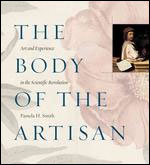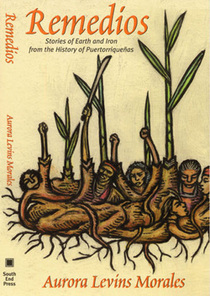Aurora and The Body of the Artisan
 This week we’ve been reading the book The Body of the Artisan: Art and Experience in the Scientific Revolution by Pamela H. Smith. In it, she is trying to trace how knowledge was made based on Naturalism, specifically in 16-17th century Europe. Instead of resorting exclusively on the kinds of knowledge making typically referred to in academia, that is, those found in books and attributed to an abstract thought process, or theory, she also attempts to trace how in the process of making “ars” different artisans constructed their own epistemologies of the world around them. In the first four chapters she makes four claims:
This week we’ve been reading the book The Body of the Artisan: Art and Experience in the Scientific Revolution by Pamela H. Smith. In it, she is trying to trace how knowledge was made based on Naturalism, specifically in 16-17th century Europe. Instead of resorting exclusively on the kinds of knowledge making typically referred to in academia, that is, those found in books and attributed to an abstract thought process, or theory, she also attempts to trace how in the process of making “ars” different artisans constructed their own epistemologies of the world around them. In the first four chapters she makes four claims:
“First, nature is primary, and certain knowledge resides in nature. Second, matter is active, and one must struggle bodily with and against this active matter to extract knowledge of nature. Third, this process of struggle is called experience, and it is learned through replication. And, finally, this imitation of nature produces an effect–a work of art–that displays the artisan’s knowledge of nature and in itself constitutes a kind of knowledge” (Smith 149).
Considering this brief synopsis, I would like to focus on the connections she makes between artisanship and alchemy in her fourth chapter, “Artisanship, Alchemy, and a Vernacular Science of Matter”. After discussing alchemy and craftmaship in their connections to Greek mythology, specifying that “Daedalus, whose name in Greek signifies ‘clever craftsman’ or ‘adept,’ symbolizes the devotee of alchemy” (135) she goes on to elaborate on late 15th century craftsmanship and its connection to alchemical methods. Smith continuously relies on Paracelsus’ texts to determine the relationship between artisans, their body, and the constructions of knowledge, for example: ” Paracelsus used ‘alchemy’ to denote the active knowledge of artisans; they practiced knowing that involved doing, and more than this, knowing that constituted a bodily engagement with nature” (142). Thus, she is focusing on the artisans’ vernacular epistemologies based on their use of alchemical procedures for making ars, but also in their early medicinal experimentation. I learned that the first cesarean section performed on a pregnant woman, wherein both mother and child survived was performed in the 1580’s! Interesting factoids.
What I’m most interested in, however, is her attention to medicinal herbs. This reminds me of a statement made by Gesa Kirsch in her talk on “Mindfulness, Strategic Contemplation and Feminist Rhetorical Practices” as part of the Rhetorical Listening series yesterday. She stated, very enthusiastically, that she found that some scholar was trying to study the rhetorics found in medicinal recipe books, which is just another example of the kinds of knowledges that are disseminated and passed down from generation to generation. Her statement, in conjunction with Pamela Smith’s chapter, made me think back on a book written by Aurora Levins Morales, a Jewish Puerto Rican who wrote a book titled Remedios: Stories of Earth and Iron from the History of Puertorriqueñas. In it she uses the format of the kinds of medicinal herb formulas our abuelas handed down to us, based on our need to survive from environmental disasters and colonial oppression, but also to male dominance of our minds and our bodies. This is an example of the kind of alchemy that Puerto Rican indias had to elaborate in order to survive.
Since Pamela Smith spends most of her time tracing the craft of craftsMAN from the 15th and 16th century Europe, I am curious as to why she didn’t devote as much attention on the work of women at the time. Could this be because there weren’t any examples to draw from? At one point she recognizes that there is a lack of texts or artifacts from the time, thus making her endeavor a more arduous task. Smith also recognizes, at the end of her book that “the story of local modes of cognition and the vernacular knowledge systems such as those of the ‘old women’ and ‘herbalists’ mentioned by almost every early modern botanist as the basis of his specimens and local plant knowledge has yet to be written” (240-241). If this is because of a lack of texts, are we left with methodologies of fiction, like Aurora, in order to trace such a history? Hopefully there are some archeologists out there who are interested in looking for these kinds of histories. But if it is simply because it is still ‘yet to be written,’ then maybe it’s about time we start.
